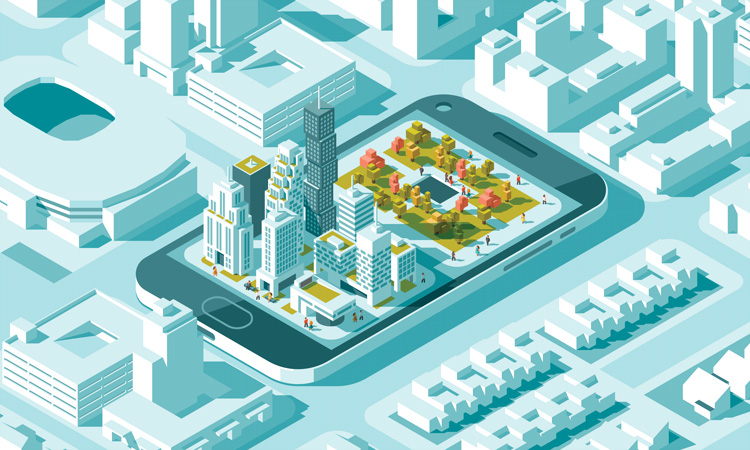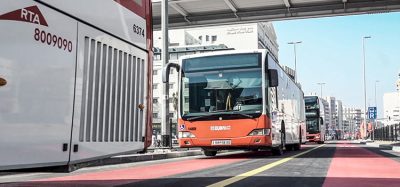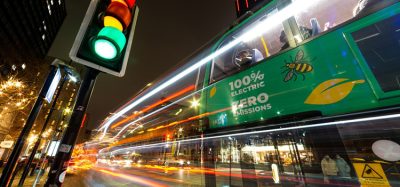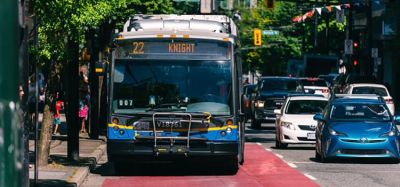Developing smart mobility for smart cities
- Like
- Digg
- Del
- Tumblr
- VKontakte
- Buffer
- Love This
- Odnoklassniki
- Meneame
- Blogger
- Amazon
- Yahoo Mail
- Gmail
- AOL
- Newsvine
- HackerNews
- Evernote
- MySpace
- Mail.ru
- Viadeo
- Line
- Comments
- Yummly
- SMS
- Viber
- Telegram
- Subscribe
- Skype
- Facebook Messenger
- Kakao
- LiveJournal
- Yammer
- Edgar
- Fintel
- Mix
- Instapaper
- Copy Link
Posted: 2 July 2020 | Konstantin Trofimenko - National Research University Higher School of Economics | No comments yet
Konstantin Trofimenko from the Institute of Transport Economics and Transport Policy Studies, part of Moscow’s Higher School of Economics, offers a vision of cities in which all urban transport processes are connected, transparent and digital, and also details the hurdles that have so far prevented such a vision from being achieved.


For more than 10 years, the topic of smart cities has been one of the most discussed among transport expert communities. Even if today the concept is largely speculative, with many corporations only using ‘smart cities’ as a slogan to sell standard automation services for various segments of the urban economy, we must be confident in the future, where the increased introduction of technology to cities will change peoples’ way of life and everyday habits.
Getting to the bottom of the smart city concept
Let’s think about how people’s mobility will change in a smart city.
Perhaps the simplest definition of a smart city from a functional point of view is a city that utilises:
- Sensors that capture all dynamic urban processes
- Communication channels that transmit this data online
- Algorithms to process big data
- Algorithms for automated management decision making based on the analysis of incoming data
- Automatic control effects on dynamic urban processes (Figure 1) if something goes wrong or there is a need to optimise processes. This is a universal principle that works for all areas of urban life, including transport and mobility.


Figure 1
At the same time, innovative and digital technologies will ensure the implementation of many of the following urban transport trends in the next 10-15 years:
- Increasing environmental friendliness
- Better security
- More reliabile
- Increased manageability of transport systems
- Faster transport flow
- Improved road capacity
- Better energy efficiency
- More economically efficient (lower costs)
- Better ride comfort (in all transport segments).
Not everything will always be designed with the intention of maximising these indicators, but broadly, these are objective trends that are relevant for every city in the world when it comes to mobility. So far, this has been the general logic as dictated by scientific and technological progress, but what happens if it becomes a more manageable process?
Another principle of modern sustainable urban transport systems is that when mobility services increase, there should be no consequent increase in negative effects (e.g. environmental damage, waste of non-renewable energy resources, accidents). As the efficiency and regularity of mobility services increase, the related negative effects need to decrease.
Smart mobility shouldn’t refer only to the technology that improves transport systems, but should represent a form of mobility in which the user of the transport system is aware of and takes into account the above factors when planning a trip. Naturally, no one remembers all of this information in their mind, but smart city and mobile apps will help.
So far, the ‘urban metabolism’ theory, which likens a city to a living body in which matter and energy circulate, has so far been just that – a theory. However, with the process of total digitalisation in our cities comes the ability to see all processes transparently, such as:
- How much energy an electric car will consume during a trip
- From what source this energy came
- How much energy was lost during transportation
- Whether this energy was produced in an environmentally friendly way.
Sensors, data management and user buy-in
Data collected from individual sources, such as sensors and application users, can be used at different scales of transport system management to solve traffic management tasks.
Future systems will be able to understand the predicted level of capacity of various elements of a multimodal transport system, and the capacity of transfer hubs between these elements (e.g. car parks). Taking into account these parameters, it would then be possible to limit the number of passengers in each segment of the transport system, distributing them more efficiently both in terms of time and space, directing them along specific multimodal routes, and using dynamic pricing to regulate the fare through different elements of the transport system.
Monitoring the regular use of MaaS systems will itself provide unique data, since users of the system are likely to follow certain habits, patterns, and preferences in choosing how to travel.
Obtaining such data from MaaS applications and processing depersonalised information using blockchain technology could significantly improve the transport planning process. Even if users’ average monthly movements are more complex than the typical ‘home-metro-work-metro-home’ pattern, it is still likely that some dependencies on and preferences for routes and transport modes could be calculated to enable predictive forecasts for the future. Based on the results of this analysis, it would then be possible to ensure optimal reallocation of passenger flows within the transport system, and ensure more accurate demand and supply.
The exchange and sharing of this kind of data between public and private entities is critical in making traffic management and transport planning smarter. Moscow’s efforts in building smart city systems has shown that it is often difficult to establish automated data exchange even between two different structures of government; there are both bureaucratic and technical problems, such as combining different types of data sets. Trying to combine data between public and private entities will only worsen these issues, if only because data sharing isn’t currently a requirement for private entities, and the appropriate economic prerequisites need to exist to encourage them.
The key issues here may not be technological, but rather with finding a balance between ensuring the principle of private data protection, transport security and the monitoring of multimodal passenger flows following the implementation of a MaaS system.
In addition, there are potential concerns around ensuring the ‘digital equality’ of users of the transport system; will users who do not participate in this information exchange receive the same high‑quality mobility services? This question is definitely worth asking in relation to the technologies of identification and facial recognition that are being actively developed and implemented in transport.
In any case, the introduction of digital mobility technologies will improve people’s lives, create new markets and radically change everyday life in cites. However, achieving such positive effects from their implementation is a complex, multidisciplinary challenge for teams of IT developers, communications providers, transport service providers, planners, economists, lawyers, and even public ethics specialists, among many other professionals.
Finding common ground
Strategic goals for the development of transport system parameters and their non-destructive impact on people and nature can receive a substantial amount of support if the regular users of the transport system share those values.
Imagine that we have online access to all of a city’s logistics chains for transporting passengers, cargo and energy. This gives rise to the concept of ‘Smart Mobility-as-a-Service’ – the next development in conventional MaaS, which is based primarily on economic incentives and time efficiency when planning a multimodal trip. With more transparent city processes, these trips could be optimised by a mobile app based on several other helpful criteria, for example:
- Optimising the use of urban space
- The absence of non-renewable energy resources in the trip, including the full lifecycle of electricity production
- Minimising electromagnetic radiation during the trip
- Comprehensive reduction of risks to the health of others, even to the extent of setting a specific value.
This more conscientious form of mobility in our cities radically changes the usual course of things. In this ecosystem, municipal authorities will be able to support more desirable patterns of multimodal mobility, thereby implementing a ‘one-click’ transport policy, whilst companies that provide goods and services can gain a huge competitive advantage by increasing the transparency of their processes for public access.
Each of the stakeholder groups in the development of the urban transport system will see significant benefits from this approach:
- City administration: a fully-managed urban transport system in which all online traffic flows are fully known, and where the demand in different segments of mobility fully matches the supply
- Tech companies and start-ups: access to a huge market that is looking for digitalisation solutions for cities, including sensors, data processing capabilities and big data algorithms that can be used for many years
- Mobility providers – the ability to optimise costs in accordance with demand
- Urban activists – an opportunity to effectively transform their slogans into transport policy measures
- Common users of the transport system – personalisation of standard urban transport services, and full recognition and satisfaction of their transport needs in accordance with their lifestyle and ideals.
Concept to reality
Naturally, there are many technical and organisational hurdles that stand in the way of implementing such a future.
Not only do cities need to consider the technical complexity of assessing all dynamic urban processes with sensors – not to mention actually equipping those sensors – they must also consider the development of evaluation indicators. Alongside this is the insufficient capacity of communication channels to transmit this data online, plus the resistance to adopt of regulations that promote the transparency of all city processes – especially by private companies. There is also the insufficient computing power of supercomputers that will process the data to contend with, as well as the overall complexity of algorithms not yet developed, and the overall issue of cyber-security in each of these elements.
The effective implementation of this concept of smart mobility in a smart city can only be achieved through a comprehensive strategy that would link the processes of implementing different smart city technologies and solving various technical problems, all while considering the interests of all stakeholders and the ethical needs and ideals of citizens.
This year, Moscow and the Moscow region are developing a regional strategy for transport development for the years leading to 2035, in which I am responsible for the foresight of transport digitalisation technologies, as well as the forecast of their implementation in Moscow and the wider region.
For the first time, we are trying not only to predict traffic volumes and plan infrastructure, but also take into account the opinions of various stakeholders in the development of the digital transport system, and develop scenarios and indicators that would allow the Moscow government to consciously approach the issue of building a smart city ecosystem in a large metropolis.
These are challenges that all of the world’s cities are facing and now is the time to share knowledge and exchange thoughts on potential solutions.
Biography










